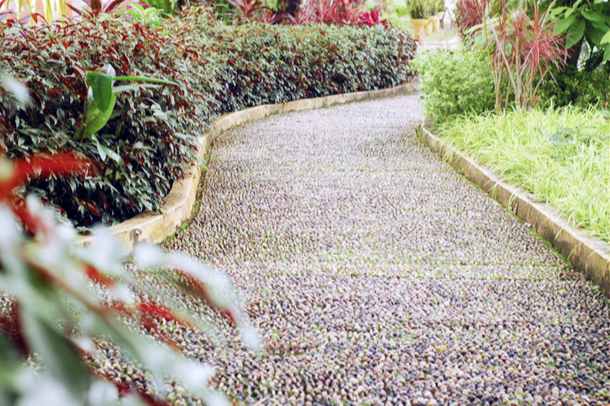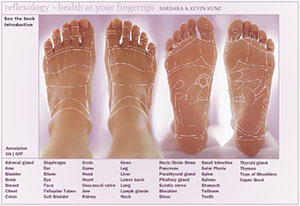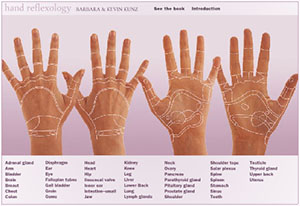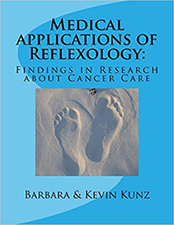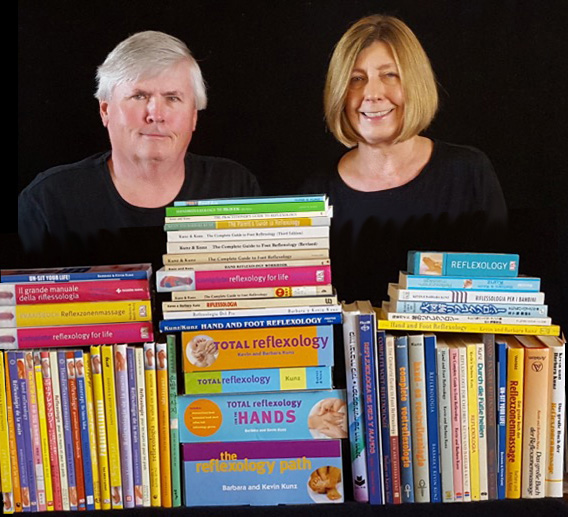Links to the Brain
fMRI Research Links Reflexology Work to Brain
by Barbara & Kevin Kunz
Research has verified a basic tenet of reflexology: reflexology technique applied to a reflex area impacts a specific, reflected part of the body. Using fMRI, Hong Kong researchers verified their hypotheses: (1) reflexology technique applied to the inner corner of the left big toe would activate the right temporal lobe and (2) “fMRI is a useful tool to investigate the central neural pathway of reflexology.” Reflexology technique applied to a reflex area reflecting a part of the brain activated that part of the brain.
In this second of a three-part series, we continue the discussion of one of three fMRI studies. Here we consider the study of technique stimulation applied to the inner lateral corner of the left great toe. Researchers noted that “few studies have been done mapping brain activation induced by massaging (applying reflexology stimulation to) specific reflex zones. In this study BOLD (blood oxygenation level dependent) fMRI was used to investigate brain activation induced by massaging the inner lateral corner of the left great toe. According to reflexology, this zone would stimulate the right temporal lobe.”
Results showed that activation of the brain resulting from reflexology stimulation was strongest at the right temporal lobe (left and right superior gyrus, Brodmann’s Area 22). It was demonstrated that reflexology technique applied to a reflex area impacted a specific, reflected part of the body.
More than anything, this study may affirm for reflexologists the importance of directing technique application to a specific reflex area to impact a specific, reflected part of the body. The impact sought is to improve or effect the function of that body part. Reflexologists specializing in pregnancy or birthing, for example, apply technique to the hypothalamus reflex area with the goal of influencing the release of oxytocin, manufactured in the hypothalmus and important to lactation after birth as well as bonding between mother and child.
Researchers state that the stronger activation at the temporal lobe prompted by reflexology work “may not be solely due to sensory pathways,” the brain recognizing pressure to the feet and processing the information. They speculate that the activation “may be related to memory, auditory or language functions.” The temporal lobe is linked to short term memory, sending that information to long term memory, recognition of spoken words and response to them.
The possibility that any of these functions or resulting disorders could be impacted through reflexology work warrants further exploration. Stroke and head injury are common causes of disturbance in the temporal lobe. Among problems created by such disturbance, for example, “… organisation and categorisation of words and pictures. Impairment of this ability to categorise means reduced ability and fluency in listing categories.” Testing for Alzheimer’s disease includes testing of such capabilities.
Research has demonstrated that other of the body’s functions and resulting disorders are effected by reflexology work. For example, during the application of reflexology work to the kidney reflex area of the foot, Doppler sonogram showed increase in blood flow to the kidney.
(Sudmeier, I., Bodner, G., Egger, I., Mur, E., Ulmer, H. and Herold, M. (Universitatsklinik fur Innere Medizin, Inssbruk, Austria) “Anderung der nierendurchblutung durch organassoziierte reflexzontherapie am fuss gemussen mit farbkodierter doppler-sonograhpie,” Forsch Komplementarmed 1999, Jum;6(3):129-34 (PMID: 14060981, UI: 99392031))
Additional research demonstrated impact to the funcitoning of the kidney when hand reflexology is applied over time (10 minutes, five days a week for 3 weeks) created a positive change in three measures of the kidney’s functioning (waste product removal, red blood cell level, immune system). Such a finding is important to those whose kidneys have failed and who undergo dialysis. (Oh SY, “The Effects of Hand Reflexology on Saeng-Chi and Immunity in ESRD Patients,” Journal Korean Acad Fundamental Nursing 2002 Aug;9(2):213-225. Korean. Seoul Women’s College of Nursing, Korea. seiyng5@snjc.ac.kr)
The fMRI study found an additional area of activation to be the left cerebellum (“related to the motor-sensory pathway for conducting impulses between muscles as well as the sensory receptors at left great toe to the primary receiving area in cerebral cortex”). Activation of the cerebellum may demonstrate, among other things, that the foot has a job to do – locomotion – and that the reflexologist’s work is impacting this job. For the reflexologist, a frequent client is the foot-sore individual. It’s not unusual for a client to get up after a session and say, “I feel like I’m walking on pillows.” It’s not difficult to imagine that the reflexologist’s hands-on work would directly effect the foot and make it feel better.
However, a further possiblity presented is that reflexology work interacts with the ability to walk. The cerebellum is needed for “posture, balance and for smooth, coordinated movements, especially simultaneous movements of different body parts.” Activation of the cerebellum with reflexology work applied to the big toe, raises the possibility of impact on walking. The big toe plays an important role in a foot step, “toe-ing off” as the final part of the foot to leave the ground in a foot step. Such action is paired with the heel strike of the other foot to create a footstep. One foot communicates with the other as the big toe of one leaves the ground and the other heel of the other strikes the ground. The impact on the cerebellum of reflexology stimulation to the big toe maps a route of influence on the ability to walk. Since the ability to walk is crucial to independent living for the aged, such potential defines a role for the reflexologist as an agent of improvement in the aging process.
Additional parts of the brain activated by reflexology work applied to the inner lateral left big toe include: right claustrum; and the right anterior central gyrus (“related to the sensory motor pathway, responsive to the tactile stimulation and movement of left toe during massage (reflexology stimulation).” (Tang Annie M., Li Geng., Chan C.C., Wong K.K.K., Li R. and Edward Yang Brain Activation at Temporal Lobe Induced by Foot Reflexology: an fMRI Study, 11th Annual NeuroImage Meeting. 2005, 1445. (Publication No. : 102229) www.humanbrainmapping.org)
